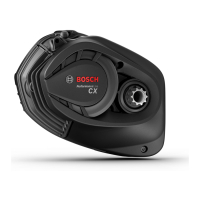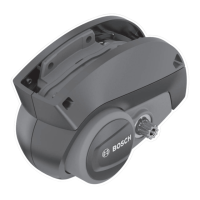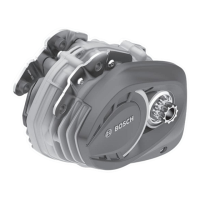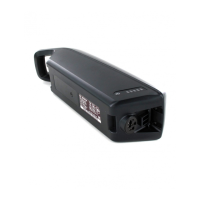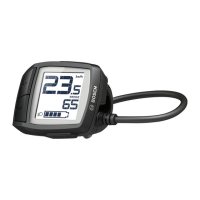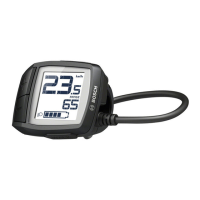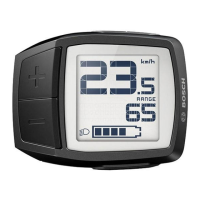13
Notes
Memory effect: Refers to the loss in the capacitance of recharge-
able batteries if they are not completely charged (does not apply
to lithium ion rechargeable batteries).
Pedal drive: Assembly consisting of pedal, crank arm and chain
wheel.
Temperature limits: Minimum and maximum temperature at
which the corresponding component may be used. At the same
time, both the temperature limits for the component as well as for
the ambient temperature may be specified.
Pedalling frequency: Number of revolutions of the pedal drive in
one minute expressed in the unit “1/min”.
Written labels
- Image captions and references in the text are rendered in italics
.
Units
Unit Meaning Unit for
1/min per minute Revolutions
A Amperes Electric current (=W/V)
Ah Ampere hour Electric charge (=Wh/V)
g Gram Weight (=kg/1000)
Hz Hertz Frequency (Hz=oscillation/s)
kg Kilogramme Weight (=g×1000)
Nm Newton meter Torque
V Volt Electric voltage (=W/A)
W Watt Electric power (A/V)
Wh Watt hour Electric capacitance (=V×Ah)
Notes
E-bike
Differences between a bicycle and e-bike
The additional components of the electric drive constitute the
major differences between a conventional bike and an e-bike.
- The e-bike's weight is considerably greater and its weight is
distributed differently than with conventional bikes. This results
in different handling.
- The drive has a significant effect on braking characteristics.
- E-bikes require greater braking forces. This may result in greater
wear than with conventional bicycles.
- The electrical assistance will increase your average speed.
• You should therefore cycle attentively. Keep in mind that
other road users must get used to the increased speed of
the e-bike.
- The bike's handling and braking as well as handling of the
rechargeable battery and charger require an appropriate level
of knowledge.
• Familiarise yourself with the characteristics of your e-bike
even if you already have some experience with electric
assisted bicycles (see chapter “Notes > Use > Before your
first ride”).
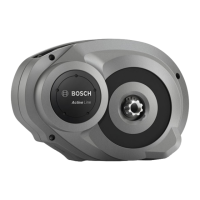
